-
 Bitcoin
Bitcoin $118000
-2.69% -
 Ethereum
Ethereum $4617
-0.94% -
 XRP
XRP $3.100
-4.95% -
 Tether USDt
Tether USDt $1.000
0.02% -
 BNB
BNB $847.9
0.68% -
 Solana
Solana $195.4
-1.22% -
 USDC
USDC $0.9997
-0.01% -
 TRON
TRON $0.3628
1.01% -
 Dogecoin
Dogecoin $0.2261
-6.42% -
 Cardano
Cardano $0.9229
5.88% -
 Chainlink
Chainlink $22.81
-2.94% -
 Hyperliquid
Hyperliquid $44.85
-1.20% -
 Sui
Sui $3.822
-3.14% -
 Stellar
Stellar $0.4239
-5.48% -
 Bitcoin Cash
Bitcoin Cash $591.3
-4.70% -
 Ethena USDe
Ethena USDe $1.001
-0.02% -
 Hedera
Hedera $0.2523
-3.94% -
 Avalanche
Avalanche $23.94
-4.27% -
 Litecoin
Litecoin $122.9
-5.68% -
 Toncoin
Toncoin $3.421
-1.11% -
 UNUS SED LEO
UNUS SED LEO $9.264
0.24% -
 Shiba Inu
Shiba Inu $0.00001303
-5.26% -
 Uniswap
Uniswap $11.01
-7.86% -
 Polkadot
Polkadot $4.038
-4.21% -
 OKB
OKB $99.10
5.46% -
 Dai
Dai $0.9998
0.00% -
 Bitget Token
Bitget Token $4.600
-2.32% -
 Cronos
Cronos $0.1534
-7.90% -
 Ethena
Ethena $0.7414
-4.15% -
 Aave
Aave $315.3
-2.45%
What are some examples of layer 2 solutions?
Layer 2 solutions like Optimistic and ZK-Rollups scale blockchains by processing transactions off-chain, reducing fees and boosting speed while maintaining Ethereum’s security.
Aug 13, 2025 at 11:36 am
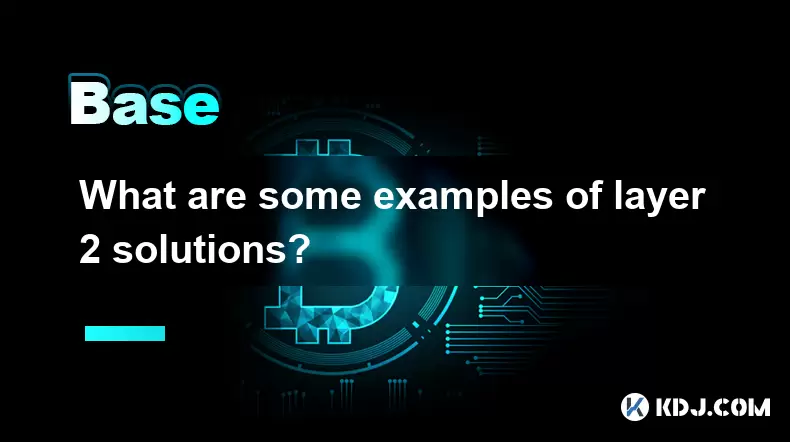
Understanding Layer 2 Solutions in Cryptocurrency
Layer 2 solutions are protocols built on top of existing blockchain networks—commonly referred to as Layer 1 blockchains such as Bitcoin or Ethereum—to improve scalability, reduce transaction costs, and increase throughput. These solutions aim to handle transactions off the main chain while still leveraging the security and decentralization of the underlying blockchain. By processing transactions outside the primary network, Layer 2s help alleviate congestion and high gas fees, especially during peak usage periods. The core idea is to batch or roll up multiple transactions into a single proof or data submission that gets verified on the main chain.
Examples of Popular Layer 2 Scaling Technologies
Several prominent Layer 2 technologies have emerged to address Ethereum’s scalability challenges. Among the most widely adopted are Optimistic Rollups, ZK-Rollups, State Channels, Plasma, and Validium. Each operates with a distinct mechanism but shares the common goal of offloading computation and data from the mainnet. For instance, Optimistic Rollups assume transactions are valid by default and only run fraud proofs if a challenge is raised. This allows faster processing but includes a dispute window—typically seven days—during which incorrect transactions can be contested.
In contrast, ZK-Rollups use zero-knowledge proofs to cryptographically verify batches of transactions before submitting them to Layer 1. This method provides immediate finality and stronger security guarantees, though it requires more computational power to generate proofs. Projects like zkSync, StarkNet, and Polygon zkEVM are notable implementations of ZK-Rollups. These solutions are particularly effective for applications requiring high throughput and low latency, such as decentralized exchanges and gaming platforms.
How State Channels Work and Their Use Cases
State Channels enable participants to conduct multiple off-chain transactions while only recording the opening and closing states on the blockchain. This approach drastically reduces the number of on-chain interactions. A well-known example is the Lightning Network for Bitcoin, which allows near-instant micropayments with minimal fees. Similarly, Ethereum-based systems like Raiden Network use state channels to facilitate fast and private token transfers.
To set up a state channel:
- Participants lock funds in a multisignature smart contract on Layer 1.
- All subsequent transactions occur directly between parties, signed cryptographically.
- Only the final state is submitted to the blockchain when the channel closes.
- Funds are released according to the last mutually agreed-upon balance.
This model is ideal for recurring interactions such as streaming payments or frequent game moves. However, state channels require participants to remain online and may not suit large-scale, open-access applications.
Exploring Plasma and Its Trade-offs
Plasma is a framework that creates child blockchains (or sidechains) anchored to the main chain. Each Plasma chain periodically submits a Merkle root of its state to Ethereum, enabling fraud proofs if invalid blocks are published. OMG Network and Matic (now Polygon PoS) were early adopters of Plasma-inspired designs, though Polygon has since evolved into a multi-layer ecosystem.
Operating a Plasma chain involves:
- Operators generating blocks and publishing commitments to Layer 1.
- Users monitoring the chain for fraudulent activity.
- A challenge period allowing users to exit if they detect invalid state transitions.
- Withdrawals requiring a waiting period to prevent theft.
While Plasma reduces mainnet load, it suffers from data availability issues and complex exit mechanisms. Users must actively watch the chain or rely on third-party watchdog services, making it less user-friendly than newer rollup-based solutions.
Sidechains and Validium: Alternative Layer 2 Models
Sidechains like Polygon PoS operate independently of Ethereum but maintain interoperability through bridges. They use their own consensus mechanisms and do not submit transaction data to Layer 1, which improves speed but sacrifices some security. Transactions on sidechains are not secured by Ethereum’s proof-of-stake but instead rely on their validators. This makes them faster and cheaper but introduces different trust assumptions.
Validium, on the other hand, is similar to ZK-Rollups but stores transaction data off-chain. This enhances scalability but reduces decentralization since data availability depends on a limited set of nodes. Projects like StarkEx support Validium mode for clients prioritizing throughput over full decentralization. While this model suits enterprise applications, it requires trust in data providers to remain honest and online.
Implementation Guide: Connecting to a Layer 2 Network
To interact with a Layer 2 solution such as Arbitrum or Optimism, users must bridge assets from Ethereum mainnet. Here’s how:
- Navigate to the official bridge of the Layer 2 network (e.g., https://bridge.arbitrum.io).
- Connect your wallet (e.g., MetaMask) to both Ethereum and the target Layer 2.
- Select the token to transfer (e.g., ETH or USDC) and enter the amount.
- Confirm the transaction on Layer 1; this may take several minutes and incur gas fees.
- Wait for the confirmation period (usually 7 days for Optimistic Rollups unless using a fast bridge).
- Once confirmed, switch your wallet network to the Layer 2 and access your funds.
For ZK-Rollups like zkSync Era, the process is similar but faster due to immediate finality. Always verify contract addresses and use official websites to avoid phishing attacks.
Frequently Asked Questions
Can I use any wallet with Layer 2 networks?
Yes, most EVM-compatible wallets like MetaMask, WalletConnect, and Coinbase Wallet support Layer 2 networks. You need to manually add the network configuration (e.g., RPC URL, chain ID) or use a service like Chainlist to auto-configure.
Are Layer 2 transactions reversible?
No, Layer 2 transactions are irreversible once confirmed, just like on Layer 1. However, during the challenge period in Optimistic Rollups, fraudulent batches can be disputed, but individual user transactions cannot be rolled back.
Do I pay gas fees on Layer 2?
Yes, but they are significantly lower. You pay fees in the native token of the Layer 2 (usually ETH), and the cost depends on network activity. Fees cover computation and data submission to Layer 1.
How do I know if a dApp supports Layer 2?
Check the dApp’s official website or documentation. Most DeFi platforms like Uniswap, Aave, and Curve offer versions on Arbitrum, Optimism, and zkSync. Wallet interfaces often display network options when connecting.
Disclaimer:info@kdj.com
The information provided is not trading advice. kdj.com does not assume any responsibility for any investments made based on the information provided in this article. Cryptocurrencies are highly volatile and it is highly recommended that you invest with caution after thorough research!
If you believe that the content used on this website infringes your copyright, please contact us immediately (info@kdj.com) and we will delete it promptly.
- Kazakhstan's Crypto Leap: Bitcoin ETF and Central Asia's Digital Finance Future
- 2025-08-13 12:45:19
- BlockDAG Presale Blazes Past $371M: Fundraising Frenzy Fuels Crypto Sensation
- 2025-08-13 13:05:21
- Meme Coins: Chasing the 2025 Surge – Which Will Moonshot?
- 2025-08-13 10:25:23
- Bitcoin's Wild Ride: Rally, Pullback, and What's Next
- 2025-08-13 10:25:23
- Bitcoin, Bitmax, and Institutional Demand: A New Era of Crypto Investment
- 2025-08-13 10:45:12
- Solana, ROAM, and Airdrops: What's the Buzz in 2025?
- 2025-08-13 11:35:13
Related knowledge
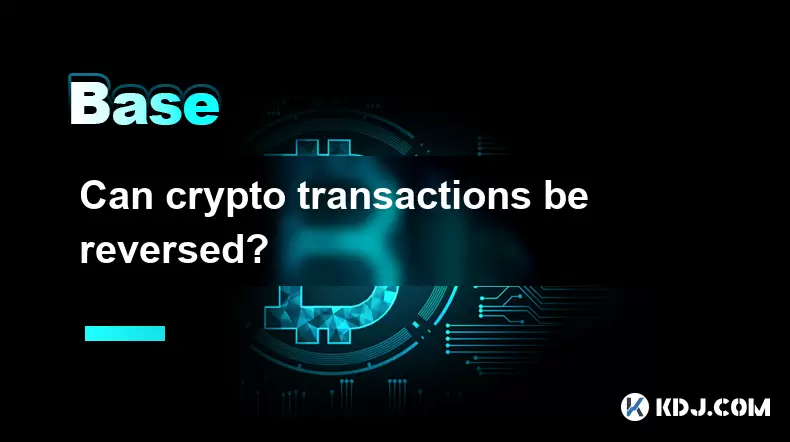
Can crypto transactions be reversed?
Aug 10,2025 at 01:35am
Understanding the Immutability of Blockchain TransactionsCryptocurrency transactions are built on blockchain technology, which is designed to be immut...
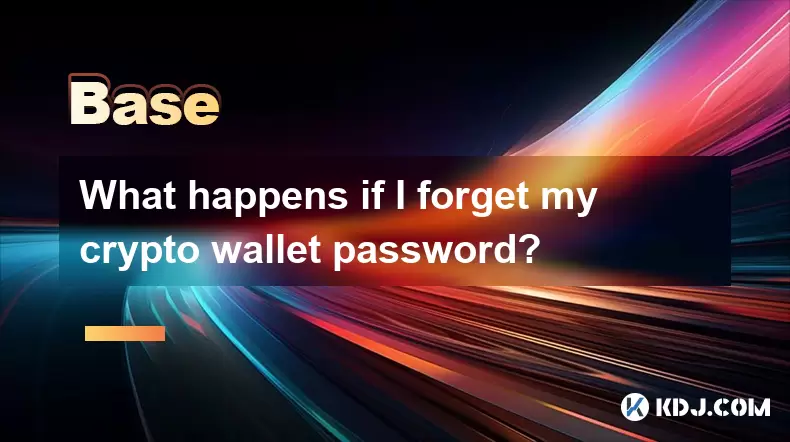
What happens if I forget my crypto wallet password?
Aug 09,2025 at 08:50am
Understanding the Role of a Crypto Wallet PasswordA crypto wallet password serves as a critical security layer that protects access to your digital as...
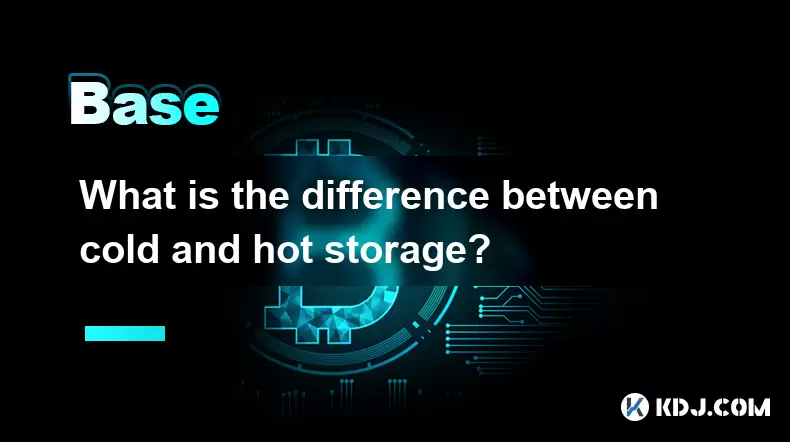
What is the difference between cold and hot storage?
Aug 12,2025 at 01:01am
Understanding Cold Storage in CryptocurrencyCold storage refers to offline methods of storing cryptocurrency private keys, ensuring they are not expos...
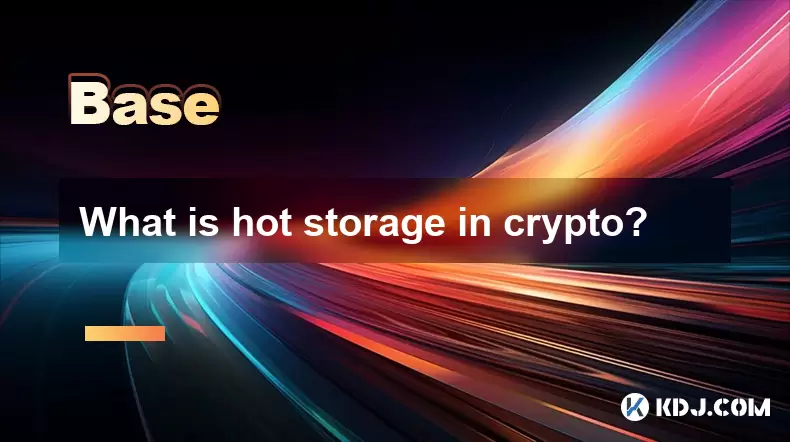
What is hot storage in crypto?
Aug 11,2025 at 07:08am
Understanding Hot Storage in CryptocurrencyHot storage refers to cryptocurrency wallets that are connected to the internet. Unlike cold storage soluti...

What is cold storage in crypto?
Aug 13,2025 at 11:35am
Understanding Cold Storage in CryptocurrencyCold storage in cryptocurrency refers to a method of storing digital assets offline, away from internet-co...

What is the best crypto portfolio tracker?
Aug 10,2025 at 05:08am
Understanding the Role of a Crypto Portfolio TrackerA crypto portfolio tracker is a digital tool designed to help investors monitor the performance of...

Can crypto transactions be reversed?
Aug 10,2025 at 01:35am
Understanding the Immutability of Blockchain TransactionsCryptocurrency transactions are built on blockchain technology, which is designed to be immut...

What happens if I forget my crypto wallet password?
Aug 09,2025 at 08:50am
Understanding the Role of a Crypto Wallet PasswordA crypto wallet password serves as a critical security layer that protects access to your digital as...

What is the difference between cold and hot storage?
Aug 12,2025 at 01:01am
Understanding Cold Storage in CryptocurrencyCold storage refers to offline methods of storing cryptocurrency private keys, ensuring they are not expos...

What is hot storage in crypto?
Aug 11,2025 at 07:08am
Understanding Hot Storage in CryptocurrencyHot storage refers to cryptocurrency wallets that are connected to the internet. Unlike cold storage soluti...

What is cold storage in crypto?
Aug 13,2025 at 11:35am
Understanding Cold Storage in CryptocurrencyCold storage in cryptocurrency refers to a method of storing digital assets offline, away from internet-co...

What is the best crypto portfolio tracker?
Aug 10,2025 at 05:08am
Understanding the Role of a Crypto Portfolio TrackerA crypto portfolio tracker is a digital tool designed to help investors monitor the performance of...
See all articles

























































































